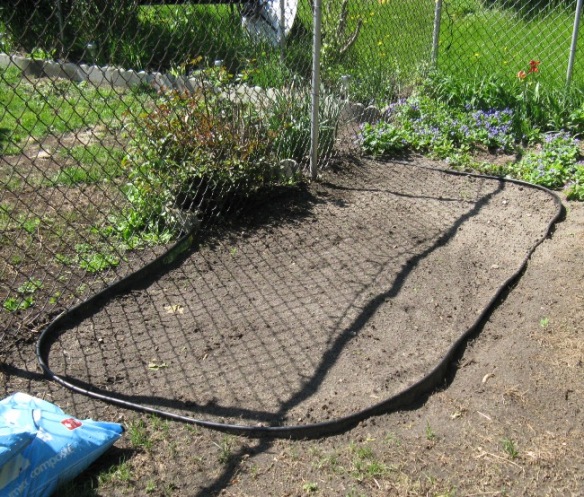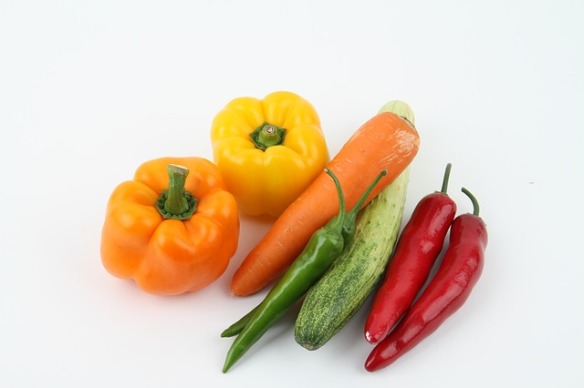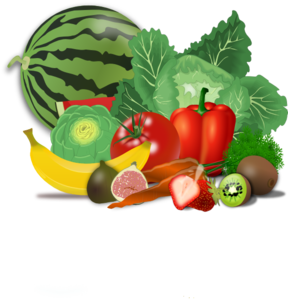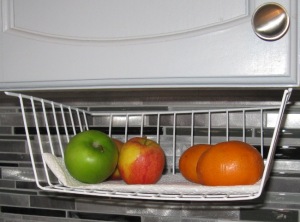I surprised myself last year by doing something I had never imagined I would do. I planted a garden of edibles.
My dad loved his gardens. When I was young, we always had a fairly good sized vegetable garden, and lots of flower beds. My dad spent hours outside in the summer, coaxing along his babies. His roses were beautiful and a great source of pride for him. I was particularly fond of the rhubarb and the raspberries. Dad recently had to give up his flower beds, as he just can’t care for them anymore.
I admit, in the past, I laughed a bit at my dad. Anytime I would visit, he would walk me around the yard, showing me what was blooming. He was always so proud. I didn’t really understand it then. I do now. I’ve had small flower beds for about seven years, and every day I find myself inspecting them, wondering if anything new is blooming. When I find something new, I call Greg over, so he can admire it with me. I have more of my dad in me than I thought.
Last year’s garden started with my desire to grow some herbs. There is no direct sunlight in my house, and plants just aren’t able to survive. So having a few herbs in pots was not an option. Planting outside was the only way I would be able to grow herbs.
I opted to create a small garden instead of trying to grow them in planters. As I was trying to determine the size I would need, I realized that if I was going to get Greg to create a garden space for me, I might as well create one that would be large enough to grow a few veggies too. So my small garden (to match my small yard) was born.
My garden really is quite small. It runs along the side fence, as that is the sunniest spot in our mostly shady backyard. It’s about 10 feet long and roughly four feet wide. It’s not much, but it’s mine. It is big enough to grow a few things.
I love my garden. Last year was not a great year for gardening in my city, as it was rainy and cold. But I had some success, especially with the herbs and the lettuce. Now I am hooked.
If you haven’t ever planted a vegetable garden, I encourage you to think about it. You might enjoy it more than you think.
8 Reasons to Plant a Garden
- The freshest produce possible: Want salad for dinner? Go out to the garden and pick the lettuce and the cucumber, make the salad and eat. It doesn’t get any fresher than that.
- The taste: The herbs and vegetables I harvested last year had the most amazing taste. When my step-daughter tasted the cucumber from the garden as she was prepping the salad, not knowing the source of the veggie, she declared it the best cucumber she had ever tasted.
- Organic produce: There is no need to wonder what might be on your food when you grew it yourself. It still needs a good wash to get the dirt off, but it’s nice to know there are no chemical residues on it.
- Save money: The cost of having your own garden is low. Even with the costs involved in building the garden last year, buying plants that were already started and some things that didn’t produce because of the cold, wet summer, I spent far less than the value of what I harvested and we ate from the garden.
- Show the kids how food grows: Many children today are a bit fuzzy about the source of their food, as they haven’t been exposed to food production. They might not know that carrots grow in the earth, peas are in pods or that cucumbers hang down from a vine. If you involve your kids in your gardening efforts, they will understand that food production isn’t instantaneous.
- A reason to spend more time outside: The garden needs tending and you want to be outside on nice days don’t you?
- Your favorite herbs, when you want them: Plant a few of your favorite herbs in your garden and you will have ready access to fresh herbs any time you need them. You won’t have those days when you are prepping dinner, only to realize you are out of a key herb for your dish. No need to remember to pick some up at the grocery store. I was able to harvest herbs last year until early December. Yes, I dusted some snow off the plants a couple of times, but I had what I needed.
- Satisfaction of producing your own food: There is something incredibly satisfying about producing concrete things. Food is not only concrete, but essential. Being able to eat the fruit of one’s labours is pretty darn cool.
Have you ever had a vegetable garden? Will you be planting one this year?




















